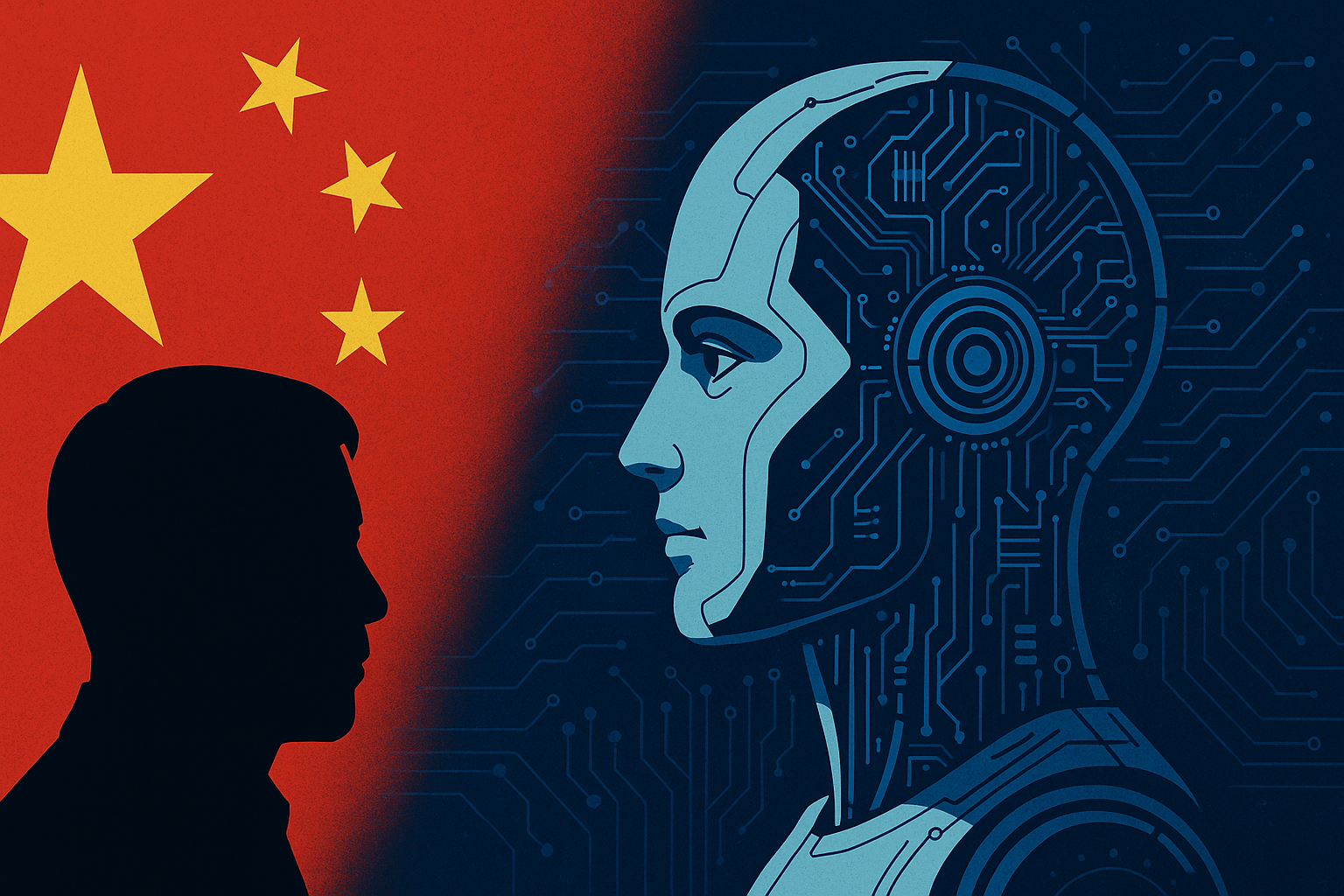In 2025, the world is witnessing a seismic shift in artificial intelligence leadership. Once trailing significantly behind the United States, China AI development in 2025 is making giant leaps, reshaping the balance of global technological power. The race is no longer theoretical it’s playing out in labs, policies, and products.
China is moving incredibly quickly and could absolutely catch up if the United States falls off its game, warns Gregory Allen, senior advisor at the Wadhwani Center for AI at CSIS. This isn’t just a statement it’s a reflection of an accelerating reality that demands global attention.
The Numbers Game: Quantity vs. Quality
The Stanford AI Index Report 2024 provides clear insights. The U.S. produced 40 notable AI models, while China had 15, and Europe had only 3. While America still leads in quantity, China AI development 2025 has narrowed the quality gap drastically and fast.
China’s top AI models are now challenging American innovations in multiple areas, from large language models to multimodal AI, robotics, and vertical specific applications.
Baidu’s ERNIE 4.0 and DeepSeek
Two notable examples reflect China’s fast paced progress. ERNIE 4.0, developed by Baidu, is a multimodal LLM capable of understanding and generating human like text, images, and even sound. ERNIE’s performance in Chinese language comprehension is on par with OpenAI’s GPT-4.
DeepSeek VL, a vision language model, has outperformed many Western models in tasks involving image captioning and multimodal reasoning. It’s already being integrated into medical imaging diagnostics and automated legal analysis tools in China.
These case studies reveal that China AI development 2025 is no longer about catching up it’s about carving out unique strengths in localized and industrial use cases.
Unified Government Strategy: China’s Secret Weapon
A key differentiator behind China’s rapid AI rise is state driven planning. The New Generation AI Development Plan, initiated in 2017, laid the groundwork for massive public private collaborations, government funding, and long term vision.
In contrast, the U.S remains more fragmented with innovation largely driven by private companies like OpenAI, Google, and Meta, but without a unified national AI policy. The consistency and scale of investment in China is unmatched, says Dr. Kai-Fu Lee, renowned AI expert and author of AI Superpowers. China isn’t just competing it’s planning to win.
Talent Retention and Repatriation: Building from Within
Another pillar of China AI development 2025 is homegrown talent. Over the past decade, Chinese universities such as Tsinghua University, ShanghaiTech, and Zhejiang University have produced thousands of top tier AI researchers.
According to a 2024 report from the Allen Institute for AI, China now produces 30% of the world’s most cited AI papers, and a growing number of Chinese AI PhDs trained in the U.S are returning home. I had offers in Silicon Valley, but the energy in Shenzhen is different.
Here, you feel like you’re building the future for your own country, says Li Ming, a 29 year old AI engineer working at a DeepTech startup in Guangdong. This reverse brain drain is powering local innovation and keeping the talent engine running on full throttle.
America Response Leading but Vulnerable
While China is advancing rapidly, the U.S still holds key advantages. Leading models such as GPT-4o, Gemini, and Claude are widely regarded as global benchmarks. American institutions dominate AI ethics, open-source contributions, and research collaboration. However, experts warn that this lead is fragile.
AI innovation in the U.S. is still world.class, but we can’t be complacent, cautions Fei-Fei Li, co-director of Stanford’s Human Centered AI Institute. A lack of cohesive policy could cost us our leadership.
Geopolitical Stakes and the AI Arms Race
AI development isn’t just about productivity or efficiency it’s about power. The AI race affects national security, economic competitiveness, and global influence.
As China AI development 2025 continues to accelerate, many nations worry about surveillance technology exports, AI warfare applications, and digital authoritarianism. We are entering a digital cold war, where the rules are undefined and the stakes are existential, says Nina Schick, AI governance expert.
As both giants push boundaries, the world faces a choice, global collaboration or technological polarization. There’s growing recognition that AI safety, ethics, and fairness require cooperation beyond borders.
Yet if trends continue, we may soon see China leading in applied AI, with the U.S. leading in foundational science a balance that could redefine power in the 21st century.
Eyes on the Dragon
In summary, China AI development 2025 is no longer just a catching up game it’s a full blown sprint with clear direction, momentum, and ambition. While the United States still leads in several dimensions, the closing gap is undeniable and, in many cases, already surpassed in certain domains.
If the global community wishes to preserve democratic values and ethical standards in AI, it must recognize the pace and seriousness of China’s progress and respond with equal seriousness. The future of AI is being written now and China holds the pen just as firmly as the U.S.

